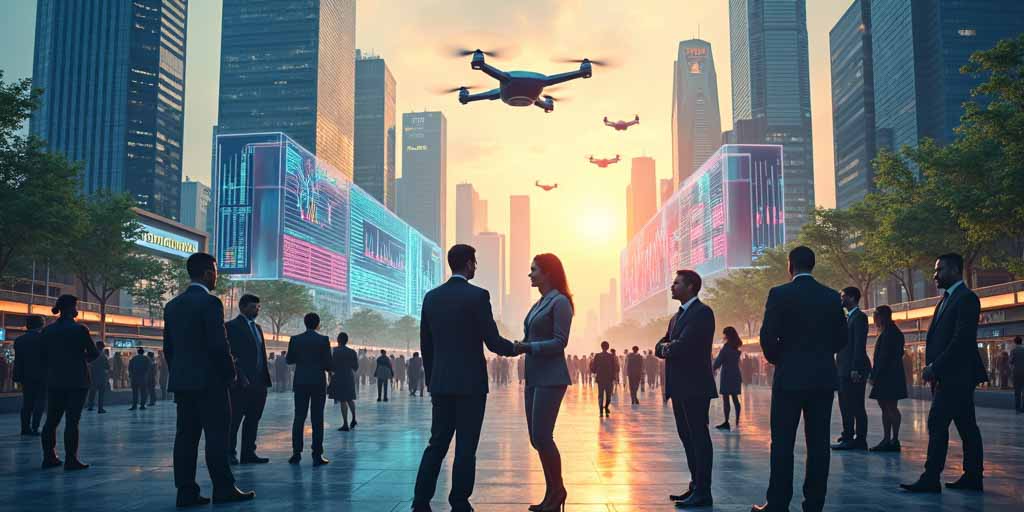2025’s Leading Immigration Trends: What Global Movers Need to Know
As we approach 2025, the landscape of global migration is evolving more rapidly than ever before, influenced by changing economic conditions, technological advancements, and shifts in international politics. Whether you’re a skilled worker, entrepreneur, or family member seeking to reunite with your loved ones, understanding these trends is crucial for anyone considering an international move. In this post, we will explore the most significant immigration trends for 2025 and offer insights to help you navigate this complex terrain.
1. Increased Demand for Tech-Savvy Immigrants
In 2025, the demand for technology-oriented professionals continues to surge globally. Countries like Canada, Australia, and Germany are increasingly skewing their immigration policies to favor skilled workers in IT, artificial intelligence, and cybersecurity. This trend is largely driven by the digital transformation initiatives that businesses across these nations are undertaking.
Example: Canada’s Express Entry system has adjusted its points allocation to favor candidates with experience in tech roles, making it a prime destination for software developers, systems analysts, and IT project managers.
2. Remote Work Visas Gain Popularity
The rise of remote work has prompted several countries to introduce specific visas that allow individuals to live in the country while working for a foreign employer. Known as digital nomad visas, these permits are particularly popular among younger populations and are available in a growing number of countries, including Portugal, Barbados, and Estonia.
Example: Estonia’s Digital Nomad Visa allows remote workers to live in Estonia for a year with the possibility of renewal, provided they meet the minimum monthly income threshold.
3. Focus on Entrepreneurial and Startup Visas
With an aim to stimulate economic growth, many nations are turning their focus towards attracting foreign entrepreneurs. In 2025, countries like New Zealand, France, and Singapore are at the forefront of offering visas specifically designed for individuals looking to start their businesses within these jurisdictions.
Example: France’s French Tech Visa provides a fast-track, four-year renewable visa for startup founders, employees, and investors who meet certain criteria, including a commitment to create jobs and drive innovation.
4. Simplified Application Processes Through Technology
Technological advancements are making immigration processes faster and more user-friendly. Online platforms, AI, and automation play a crucial role in simplifying document submissions, background checks, and even decision-making processes. This trend is not only making applications more accessible but also significantly reducing processing times.
Example: Australia’s Home Affairs department has integrated AI to assess certain visa categories, enabling faster processing and more accurate outcomes for applicants.
5. Increased Scrutiny on Compliance and Security
As the world becomes more connected, there is also a heightened focus on security. This means stricter background checks and more thorough vetting processes, particularly for countries facing security challenges. Immigrants might find increased requirements for biometrics and security clearances in 2025.
Example: The United States has expanded its biometric requirements to include iris scans, facial recognition, and voiceprints for most visa categories, enhancing security measures within its immigration framework.
6. Regional Mobility Agreements Expand
Regional mobility is becoming more streamlined as countries enter agreements that permit easier movement of citizens between nations. This is particularly evident in regions like the European Union, ASEAN, and CARICOM, where such agreements not only facilitate the movement of skilled workers but also bolster economic integration.
Example: The African Continental Free Trade Area (AfCFTA) has been pivotal in increasing mobility for African professionals across the continent, reducing barriers and simplifying work permit processes within member states.
7. Social and Humanitarian Considerations
In response to global challenges such as climate change and political instability, more countries are shaping their immigration policies around humanitarian needs. This includes offering refuge to those fleeing environmental disasters and conflicts, as well as creating pathways for migrants to contribute positively to their host communities.
Example: Sweden has introduced a new category of visa for ‘Environmental Migrants’ who are displaced by environmental factors like flooding and droughts, recognizing the growing impact of climate change on migration.
Conclusion
The landscape of global immigration is dynamic and can be influenced by myriad factors from economic shifts to technological innovations. As we move into 2025, staying informed about these trends is vital for anyone looking to navigate the complexities of international relocation. Whether your move is driven by professional ambitions, lifestyle changes, or family reunification, understanding these trends will equip you to make well-informed decisions and streamline your immigration journey.
By staying abreast of these developments and preparing accordingly, global movers can position themselves to take full advantage of the opportunities that arise in an ever-evolving global landscape. Remember, successful migration often hinges not just on where you move, but also on how well you adapt to these trends and integrate into your new home.
